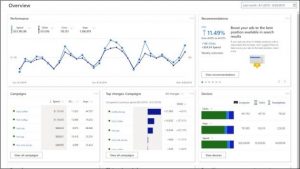— August 1, 2018
As a business owner, you want your operations to be seamless and profitable. You’ve hired the right people, got an ecommerce website up and running, and launched social media platforms. These are all important to make your company tick. But you’ve likely ignored one vital piece of the business: your inventory. Without products, you wouldn’t have a business to begin with. Still, 43 percent of small businesses use outdated manual processes to track inventory or don’t manage inventory at all. If you want your business to stand out among competitors and a make a profit, inventory management should not be an afterthought.
If you don’t believe me, then consider these outcomes companies experience from the use of inventory management.
- Increased sales: Nearly half of small businesses claim one of their biggest challenges is increasing profits. Your inventory management (or lack thereof) is contributing to the problem. If you don’t accurately monitor inventory, you run a greater risk of backordered items or orders that aren’t shipped in a timely manner. According to research, 70 percent of customers choose to make their purchases elsewhere if it means getting their order quicker. If you had a grip on inventory, you wouldn’t miss out on sales.
- Decreased storage costs: An inventory management system provides accurate, real-time reports so you don’t purchase too many items. When stock sits on shelves, carrying costs add up. Not to mention, the cash you spent on items you didn’t need is a big waste of resources that busts your bottom line.
- Reduced Waste: When certain items aren’t sold, they could spoil or even go “out of style,” and many resources are wasted. With measurable inventory management, you can access forecast reports than can help you prevent waste before it happens, saving resources and wasted inventory.
- Improved Customer Loyalty: When you consistently have issues with inventory, what’s stopping people from buying from the other guy? Absolutely nothing. And the numbers prove it; 65 percent of customers have quiet buying from a company due to a poor experience. Good inventory management creates customer loyalty adds value to your business.
When all these pieces come together through inventory management, it means more money in the bank because it’s not tied up in wasted stock. That cash helps overcome a common challenge for small businesses: growth and expansion.
Before you can experience the benefits mentioned above, you need to forecast correctly. You might think it’s way too time consuming or too much of an investment to implement an automated inventory management system. The truth is most inventory management companies offer on-site training and execution with little to no downtime. The investment of time and resources now can up your end game.
One key way is through proper forecasting, which can positively impact your operations.
Effectively Keep Safety Stock On-Hand.
When you’re running a company, you need to prepare for the unexpected. That’s why keeping safety—or backup—stock on hand for each item you carry. Safety stock should never be used for normal sales, since it’s kept in a reserve in the case of a higher demand.
While ordering safety stock is indeed an estimation, it shouldn’t be a blind guess, either. That’s where data from an automated inventory management system comes in very handy. The metrics from both past and present is valuable to make more educated purchasing decisions. It’s recommended to take numbers from your best sales days over the previous quarter or year and use this formula:
Safety stock = (Sales of top volume/3) – Average daily sales volume
When you collect accurate data on a regular basis, you can maintain safety stock and fulfill daily sale sales.
Know Re-Order Points
What’s a reorder point? Exactly what it sounds like: the exact point when you need to re-order inventory. If you’ve tracked inventory manually, you may have experienced overstocks when ordering too early or having to dig into your safety stock when you order too late. Neither one is a good situation for you or your customers.
So, here’s how you can avoid a potentially bad scene. Track lead time between ordering new stock and the time it is delivered and ready to sell. This gives you a more breathing room as to not use safety stock.
Here is the formula to figure your unique reorder points:
(The lead time between ordering new items and preparing them to sell) x (Average daily sales volume over a month/quarter/year) + Safety stock number
Figure Economic Order Quantity (EOQ)
Knowing how much inventory to order is a whole other story, and the EOQ not only helps calculate this number, but also keeps carrying costs at bay.
EOQ is based on three variables:
- Demand. The number of units sold over a given time period, usually a year.
- Relevant ordering cost. Total ordering costs per order. (You need to account for labor hours, transportation, and any other associated costs.)
- Relevant carrying cost. For each item in stock during a certain time period, it’s important to figure the carrying cost per unit, which can account for 25% of inventory value on hand. Carrying costs include factors such as the total cost of purchasing items, housing, handling, and accounting for depreciation of items that don’t sell right away.
Running your business and keeping your warehouse running seamlessly is a big task. An inventory management system makes all of it less daunting and is vital to get tighten up operations and build success from the inside out.
Business & Finance Articles on Business 2 Community
(92)
Report Post







